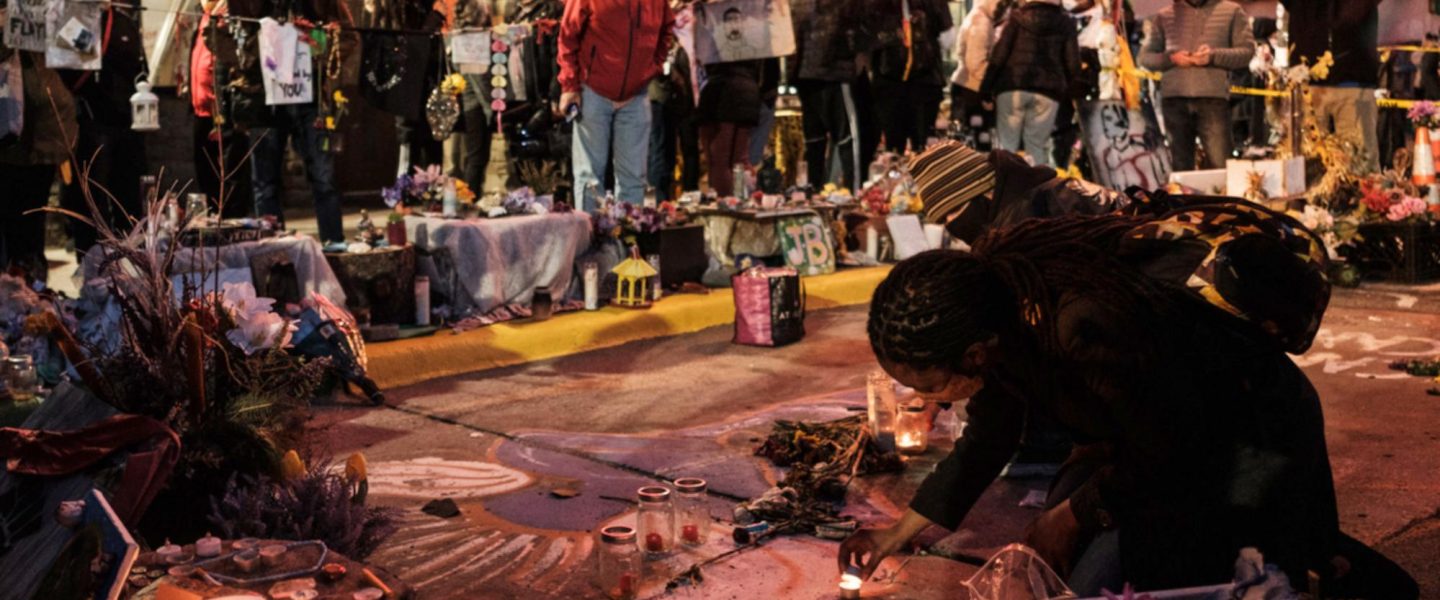What George Floyd Changed ; Minneapolis Remains Scarred, Divided ; and More Picks 5/25
PICKS are stories from many sources, selected by our editors or recommended by our readers because they are important, surprising, troubling, enlightening, inspiring, or amusing. They appear on our site and in our daily newsletter. Please send suggested articles, videos, podcasts, etc. to picks@whowhatwhy.org.
What George Floyd Changed
From Politico: “In the year since George Floyd died under the knee of a Minneapolis police officer, the explosive waves of national protest that followed have taken on almost a settled meaning: They were calls for police reform, and for America to take a hard look at the racial injustice threaded through its civic life. But in its breadth and impact, the reaction to Floyd’s killing also blew through any conventional expectations for what a ‘protest’ might touch. The reckoning it prompted about race in America extended to workplaces, classrooms, legislatures; it shook the worlds of art, literature and media. Americans began to talk about their own history differently. They physically pulled down monuments. The waves crashed against the fence of the White House, and rippled overseas.”
A Year After George Floyd’s Death, Minneapolis Remains Scarred, Divided
The author writes, “A year after George Floyd’s death sent millions across the country into the streets in some of the largest sustained protests in American history, the city at the center of that movement continues to struggle with its own reckoning over policing, equality and racial justice. Colorful signs featuring Floyd’s name and face still decorate front yards across this Upper Midwestern city in a collective demand for justice. Visible scars also remain from the unrest that erupted after his death, leaving scores of buildings damaged or destroyed. While the city breathed a collective sigh of relief last month when a jury convicted former Minneapolis police officer Derek Chauvin of murder and manslaughter in Floyd’s death, the sensation was fleeting.”
A Year in the Life of the City That Killed George Floyd
From the Star Tribune: “Once upon a time in Minneapolis, a police officer drove through a crowded downtown intersection, aimed a can of Mace out the window, and started spraying bystanders as if they were cockroaches. Coughing, I tweeted out a brief video of the incident on Hennepin Avenue, then went back to covering the protest last May, under the watchful eye of the Bob Dylan mural. Just another bad moment in the city’s worst year.”
After George Floyd, Other American Families Whose Loved Ones Were Killed by Police Battle for Justice
From USA Today: “While many Americans shouted Floyd’s name in the wake of his killing, fewer know the names of those who have died since. But by sharing stories of outrage, grief and even joy when remembering those who died, four families that spoke with USA TODAY said they hoped bringing greater visibility to their cases might reform a police system that disproportionately harms people of color.”
George Floyd Memorial Center Launches Day of Enlightenment
From Atlanta Daily World: “The George Floyd Memorial Center announced it is declaring May 25 as the annual Day of Enlightenment (5/25 D.O.E.). Why? Because on May 25, 2020 the world watched an act of terror for 9 minutes and 29 seconds. What followed were months of protests in more than 60 countries across the world. In the midst of a global pandemic, millions of people from all backgrounds gathered to raise their collective voices to say enough is enough. What resulted was an awakening of minds to police brutality towards and against marginalized communities, especially the Black community.”
‘I Allowed Myself to Feel Guilty for a Very Long Time’: The Teenage Cashier Who Took George Floyd’s $20 Bill
The author writes, “Christopher Martin lived above a bricked grocery store in south Minneapolis, with a maroon awning and bold red signage that reads Cup Foods. So when a cashier’s position came up last year, he took it without thinking. He quickly learned the regulars’ orders by heart, their specific tobacco preferences, their favored snacks. The job was more than just a paycheck. ‘A family, community base,’ he remembered. ‘A lot of jokes and laughs.’ But on [May 25] last year, he served a customer he had never met before, igniting a chain of events that rippled around the world and irreversibly changed Martin’s life.”
One Year On, How George Floyd’s Murder Has Changed the World
The authors write, “The high-profile murder of Floyd, who was pinned under the knee of a police officer for nine minutes and 29 seconds, captured the parallels between police violence against Black people across the globe, and evoked the deaths of Adama Traoré in France and Mark Duggan in the UK before him, even though the circumstances of the deaths differ. And the execution reflected a common history of violence against Black people, from slavery to colonialism, that united protesters in a renewed global movement against the legacy of empire and its enduring racist symbols.”
How George Floyd’s Death Energised French Protests
The author writes, “Black Lives Matter banners aligned with France’s own domestic movement organised under the slogan ‘Justice for Adama.’ Adama Traoré was a young black man who died in French police custody in 2016. Traoré, Amine Bentounsi, Remi Fraisse, Théo Luhaka, Cédric Chouviat. These are just some of the names of working-class victims of alleged police brutality in France, many of them black or Arab. The movement dates back decades, with its earliest advocates from France’s working-class suburbs, but there have also been more recent student protests in secondary schools.”
How Plywood From Last Year’s Protests Became Art
The author writes, “The morning in April before a Minneapolis jury found the former police officer Derek Chauvin guilty of murdering George Floyd, Leesa Kelly woke up from a nightmare. As she had done many times over the past year, she cried out feelings of anger and hopelessness. … ‘Nothing seemed to quell this feeling inside me: just deep despair and anger,’ she said. From that unsettled place emerged an idea that would become Memorialize the Movement, a project to preserve and exhibit the plywood sheets that business owners had affixed to their storefronts out of concern about vandalism by marchers, many of whom instead transformed the sheets into art: murals and other works inspired by the moment, applied in paint, spray paint, pen, pencil, marker and chalk.”



